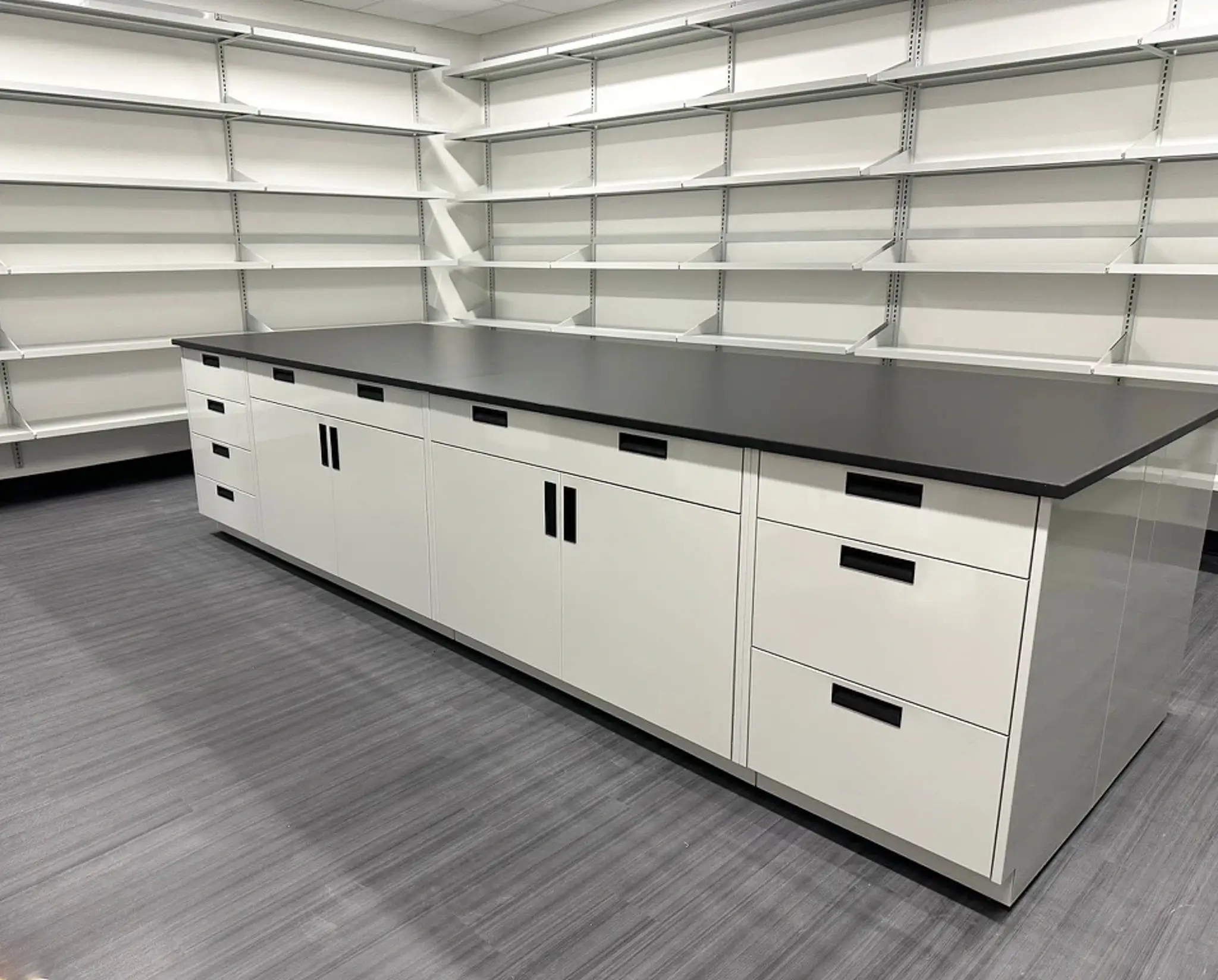

Laboratory design is a complex and intricate field that plays a crucial role in the success of scientific research and experimentation. One often overlooked but essential aspect of laboratory design is the selection and configuration of lab furniture. Lab furniture is not just about aesthetics; it directly impacts the efficiency, safety, and functionality of a laboratory. In this blog, we will dive into the technical aspects of lab furniture design, materials, and their profound impact on lab operations.
Ergonomics and Workspace Efficiency
One of the key considerations in lab furniture design is ergonomics. Ergonomics focuses on creating a workspace that minimizes physical strain and maximizes comfort for lab technicians. Lab benches and workstations should be adjustable in height, allowing scientists to work comfortably while sitting or standing. The placement of equipment, storage, and work surfaces should be carefully planned to minimize unnecessary movements, reducing the risk of repetitive strain injuries and increasing overall productivity.
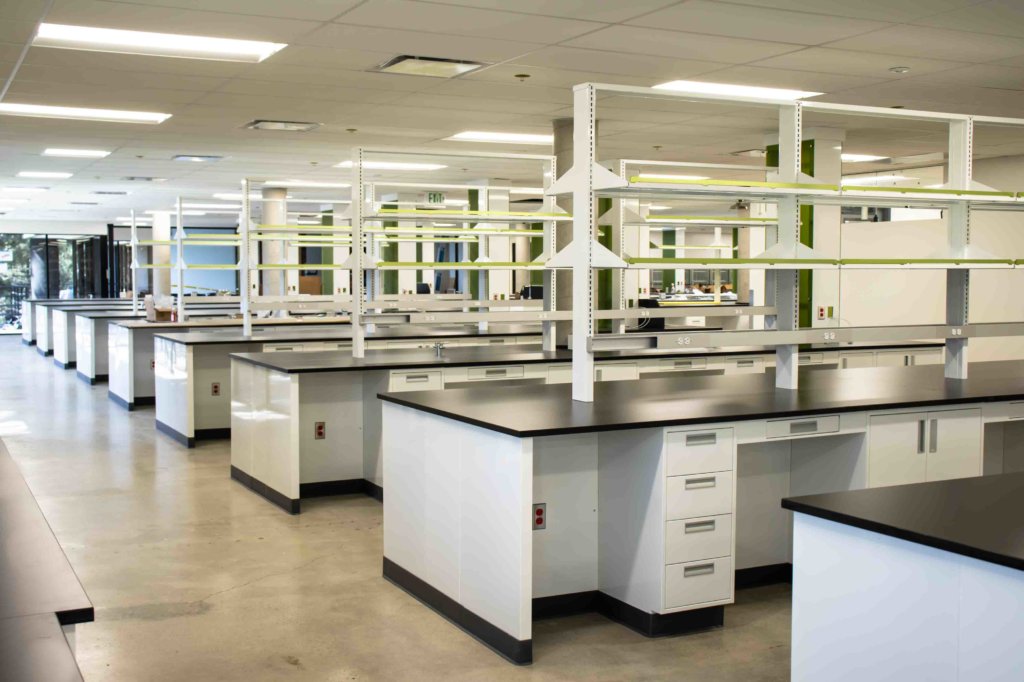
Material Selection
The choice of materials for lab furniture is critical and depends on the laboratory’s specific needs. Common materials used include:
- Stainless Steel: Stainless steel is popular due to its corrosion resistance and durability. It is often used in laboratories where cleanliness and biosafety are a primary concern.
- Epoxy Resin: Epoxy resin is a non-porous material resistant to chemicals, heat, and moisture. It is the traditional choice for laboratory countertops and work surfaces.
- Phenolic Resin: Like epoxy, phenolic resin is also a non-porous material resistant to chemicals, moisture, and heat. It has great durability and scratch-resistant properties.
- ESD Laminate: Mainly used on ESD workbenches and environments where preventing electrostatic discharge is key.
- Plastic Laminate: Laminates provide a cost-effective option for lab furniture. However, though easy to clean and come in various colors and finishes, they should be in lab areas where no chemicals or harsh substances are present, as plastic laminate does not have chemical-resistant attributes.
- Wood or Maple Block: While less common in modern labs, wood can still be used in lab furniture design for aesthetic reasons. However, it is not resistant to chemicals and may require more maintenance.
Material selection should align with the laboratory’s specific requirements, such as chemical compatibility, durability, and ease of cleaning.
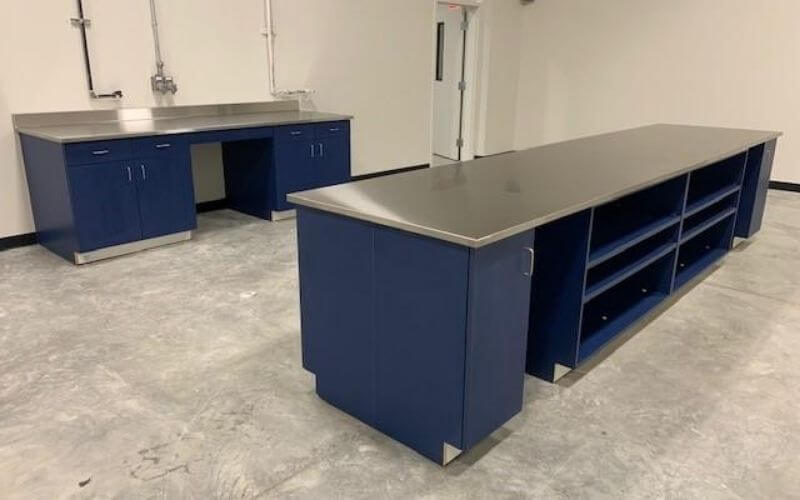
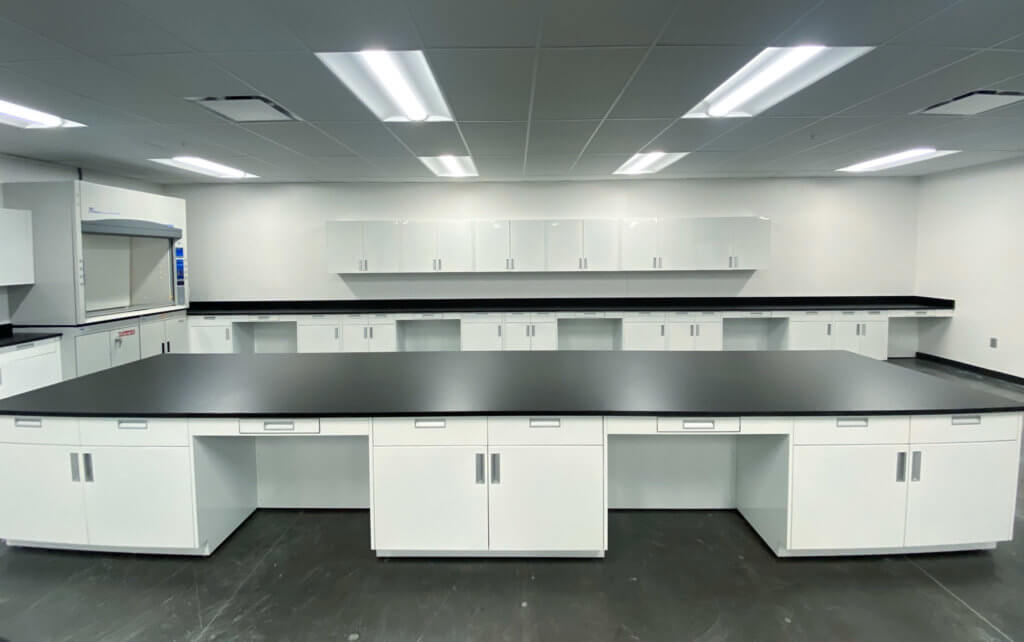
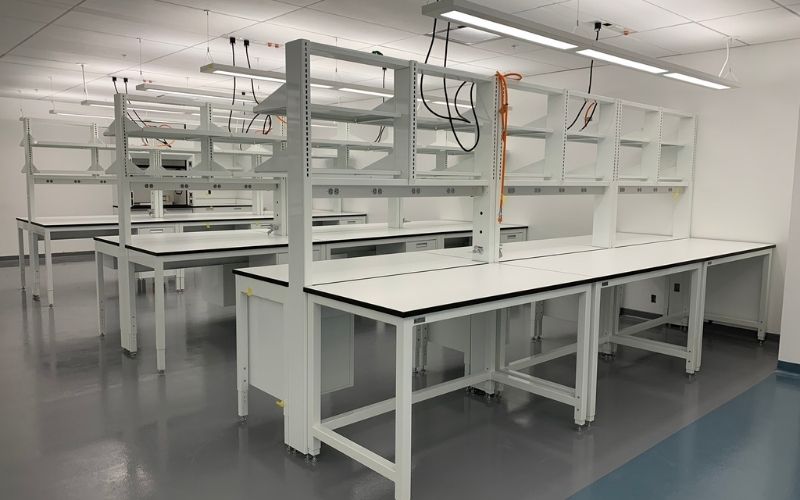
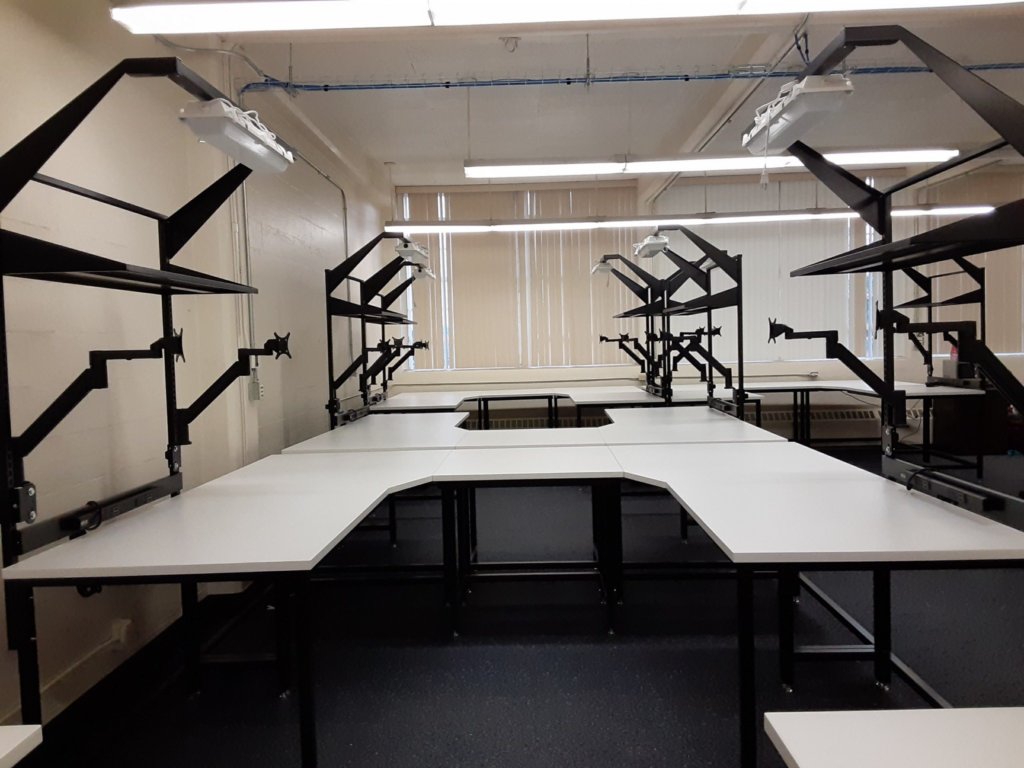
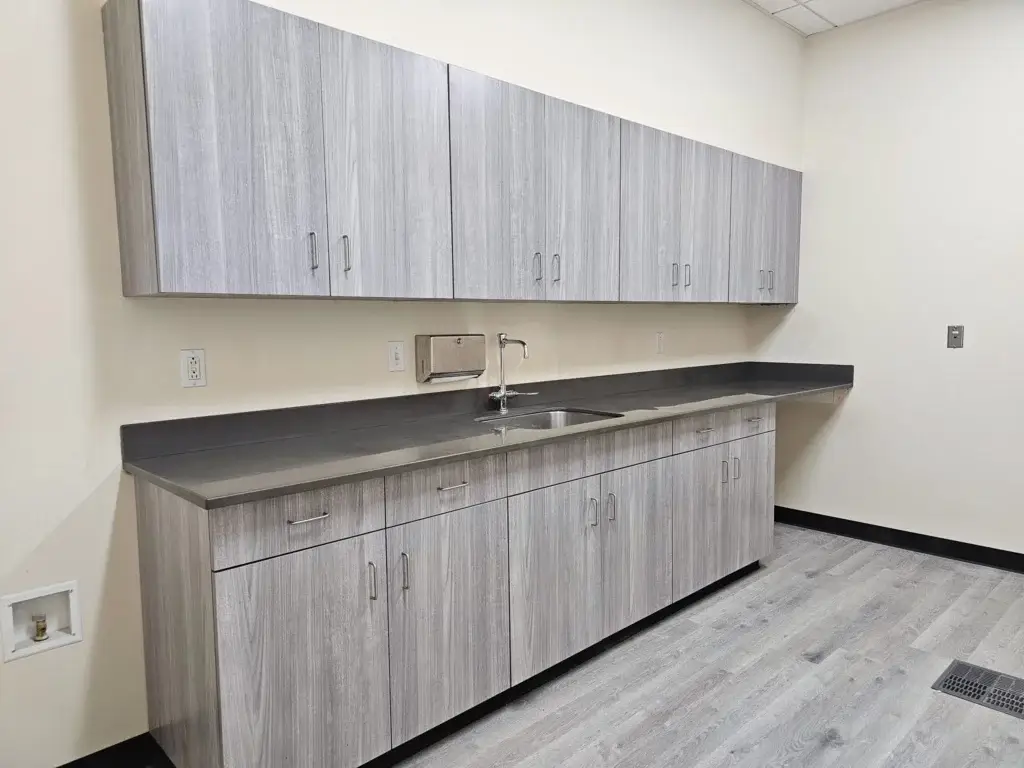
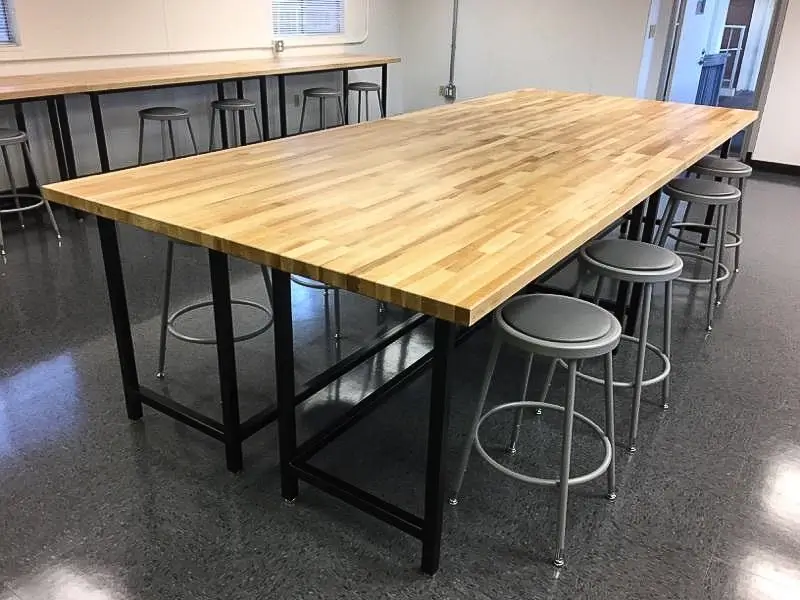
Safety Considerations
Lab safety is paramount, and lab furniture design is crucial in ensuring a safe working environment. Furniture should be designed to minimize the risk of accidents and spills. Features such as built-in spill containment and safety shields can help protect lab personnel and equipment. Additionally, lab furniture should adhere to safety standards and regulations to maintain a safe and compliant workspace.

Flexibility and Modularity
The flexibility of lab furniture is essential to accommodate changing research needs. Modular lab furniture systems allow for easy reconfiguration and expansion as research requirements evolve. This adaptability can save time and resources by avoiding purchasing entirely new furniture when the lab’s needs change.
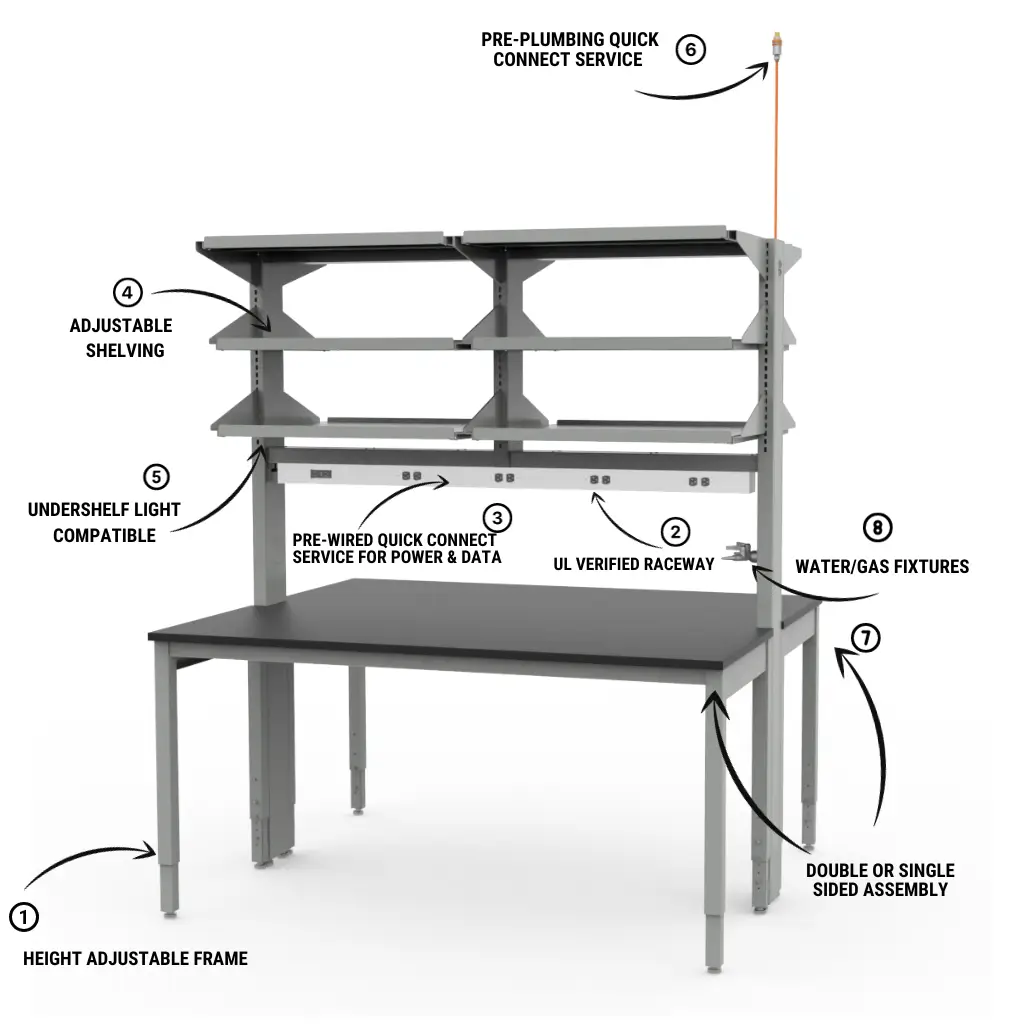
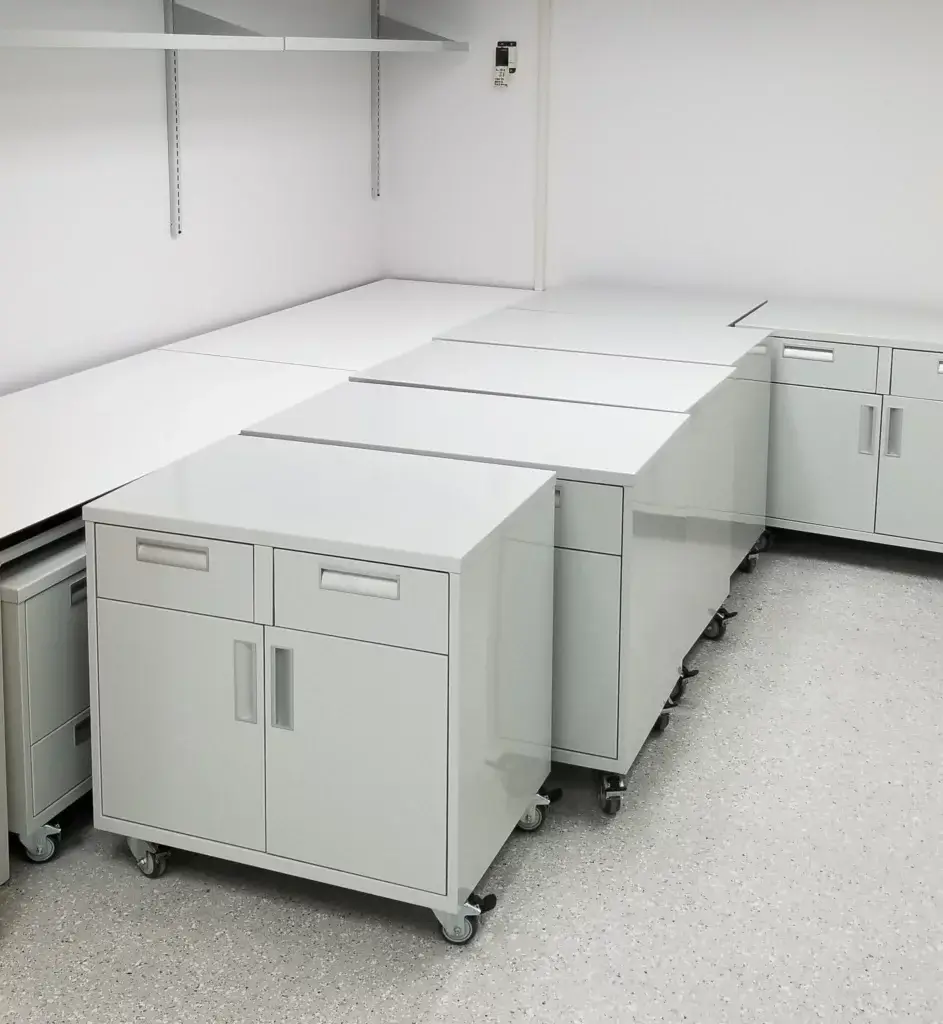
Flex Systems
Mobile/Modular Cabinets
Integration of Technology
In today’s modern laboratories, the integration of technology is crucial. Lab furniture should be designed to accommodate various instruments, computers, and data management systems. Cable management and access to power outlets should be carefully considered to ensure a clutter-free and efficient workspace.
Environmental Sustainability
Sustainability is an increasingly important consideration in lab design. Sustainable materials and energy-efficient designs can reduce the environmental footprint of a laboratory. Selecting eco-friendly materials and energy-efficient lab furniture can contribute to a greener and more responsible lab operation.
For more information about sustainable lab designs, check out our blog: Sustainable Laboratory Design
How Important is This?
Lab furniture design is a highly technical and intricate aspect of laboratory planning. Properly designed lab furniture not only enhances the aesthetics of a laboratory but also directly impacts the efficiency, safety, and functionality of the workspace. Lab designers can create spaces that promote productivity and support scientific advancements by considering ergonomics, material selection, safety, flexibility, technology integration, and environmental sustainability. Investing in well-designed lab furniture is an investment in the success of scientific research and experimentation.
Need Laboratory Furniture?
Having the right laboratory furniture is an intricate aspect of laboratory planning, and its significance cannot be overstated. It’s not just about aesthetics; it’s about enhancing efficiency, ensuring safety, and enabling innovation.
At OnePointe Solutions, our expertise in crafting customized lab furniture solutions, with our ability to adapt to the evolving needs of laboratories allows us to understand the evolving changes in the world of laboratory design. With us by your side, your lab can thrive in a well-equipped, thoughtfully designed-environment, enabling breakthroughs and discoveries. Give us a call today at (866) 612-7312 to speak with a team member about your laboratory design.


